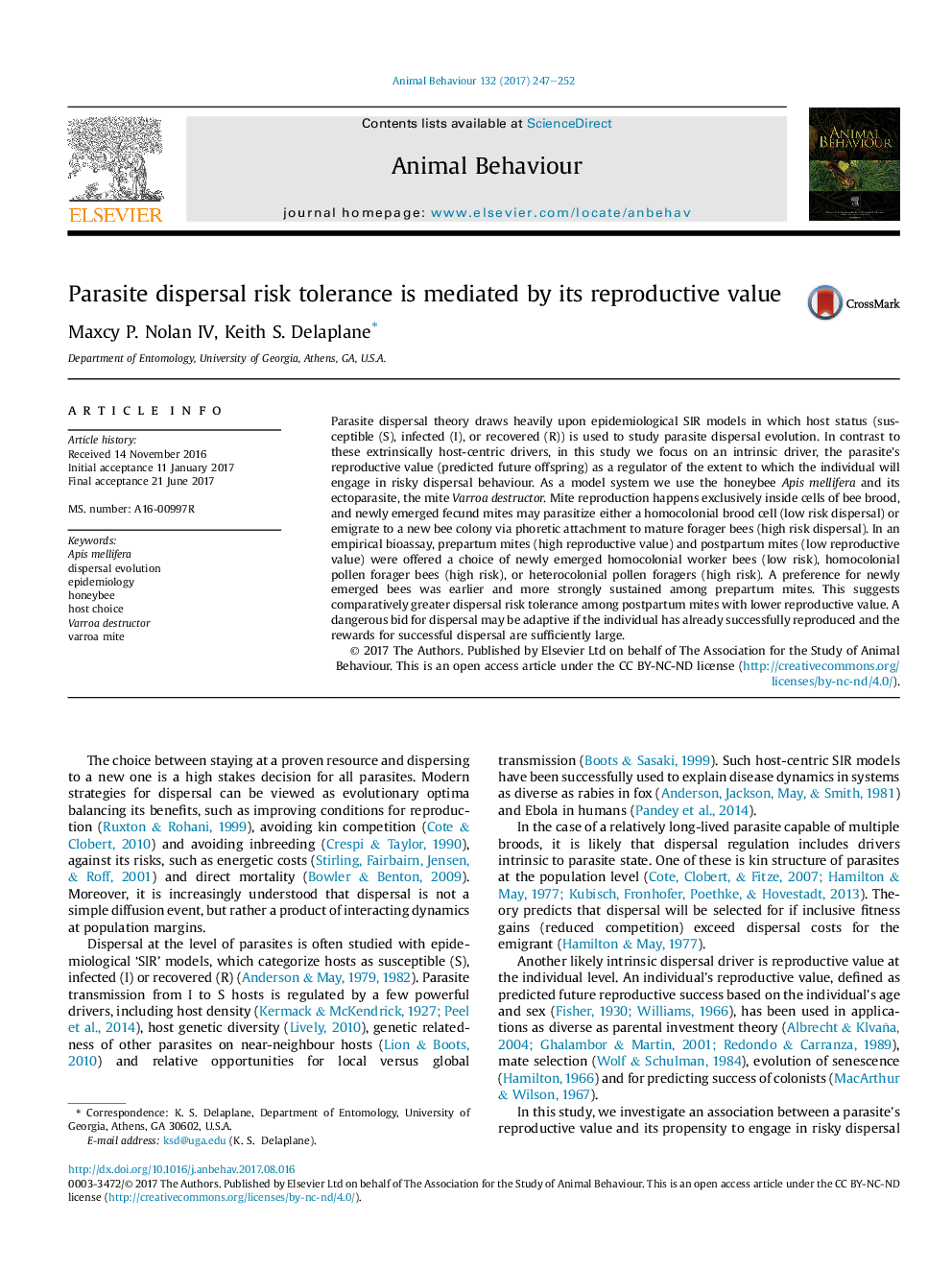| کد مقاله | کد نشریه | سال انتشار | مقاله انگلیسی | نسخه تمام متن |
|---|---|---|---|---|
| 5538298 | 1552196 | 2017 | 6 صفحه PDF | دانلود رایگان |
عنوان انگلیسی مقاله ISI
Parasite dispersal risk tolerance is mediated by its reproductive value
ترجمه فارسی عنوان
تحمل ریسک پراکندگی انگل با ارزش تولید مثل آن استوار است
دانلود مقاله + سفارش ترجمه
دانلود مقاله ISI انگلیسی
رایگان برای ایرانیان
کلمات کلیدی
موضوعات مرتبط
علوم زیستی و بیوفناوری
علوم کشاورزی و بیولوژیک
علوم دامی و جانورشناسی
چکیده انگلیسی
Parasite dispersal theory draws heavily upon epidemiological SIR models in which host status (susceptible (S), infected (I), or recovered (R)) is used to study parasite dispersal evolution. In contrast to these extrinsically host-centric drivers, in this study we focus on an intrinsic driver, the parasite's reproductive value (predicted future offspring) as a regulator of the extent to which the individual will engage in risky dispersal behaviour. As a model system we use the honeybee Apis mellifera and its ectoparasite, the mite Varroa destructor. Mite reproduction happens exclusively inside cells of bee brood, and newly emerged fecund mites may parasitize either a homocolonial brood cell (low risk dispersal) or emigrate to a new bee colony via phoretic attachment to mature forager bees (high risk dispersal). In an empirical bioassay, prepartum mites (high reproductive value) and postpartum mites (low reproductive value) were offered a choice of newly emerged homocolonial worker bees (low risk), homocolonial pollen forager bees (high risk), or heterocolonial pollen foragers (high risk). A preference for newly emerged bees was earlier and more strongly sustained among prepartum mites. This suggests comparatively greater dispersal risk tolerance among postpartum mites with lower reproductive value. A dangerous bid for dispersal may be adaptive if the individual has already successfully reproduced and the rewards for successful dispersal are sufficiently large.
ناشر
Database: Elsevier - ScienceDirect (ساینس دایرکت)
Journal: Animal Behaviour - Volume 132, October 2017, Pages 247-252
Journal: Animal Behaviour - Volume 132, October 2017, Pages 247-252
نویسندگان
Maxcy P. IV, Keith S. Delaplane,
